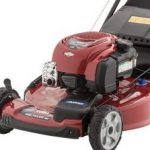Maintaining your lawn doesn’t end with cutting and fertilizing. If you are using any species of grass other than rye, then there is a good chance you will need to scarify your lawn two times a year.
Scarifying is the act of removing dead grass or moss from your lawn. It is an important undertaking because it helps to enhance the quality and appearance of a lawn.
Moss can become an issue if you live in a wet climate and your lawn is covered with shade or the soil in which the grass is growing has a large amount of clay.
Scarifying is performed either with a rake or a device that includes steel blades that cut into the soil below the lawn. There are machines that rotate the blades and there are also manual tools like a rolling lawn scarifier that does not. Instead, the manual kind of scarifier must be dragged across the lawn to activate the blades.
Lawn care experts point out that removing dead grass, known as thatch, is more easily accomplished by cutting
action. What results is a firmer lawn that permits air, nutrients and water to pass through the lawn to the soil. A scarifier machine is also an ideal tool for opening up the soil to accept seed for the creation of new grass to improve the appearance of a lawn. The machine has proven ideal because the blades can cut deep into the soil beneath the lawn.
The scarifier’s blades also prune the grass plants because it cuts downward rather than across, which occurs when mowing. The process of pruning causes extra shoots to grow resulting in a thicker turf.
In addition, the chopping action of the blades helps to control coarser or delicate weed grasses including Yorkshire Fog and Annual Meadow. It also assists in controlling creeping weeds like speedwell and trefoils also known as yellow suckling clover.
As mentioned above, rakes can also be used to scarify. Instead of featuring moving blade tines, rakes use wire tines.
Wire is considered best in this case because moss is not rooted and can be lifted out quite easily. This means that
you will be pulling or ripping the moss out rather than cutting it out.
Besides common rakes, there are raking machines that feature wires that flail at the grass. This allows the wires to flick out of the way if they encounter a hard obstacle. So flail wired machines are an excellent way to remove moss without too much damage to the lawn. Racking machines come in various sizes. Smaller ones feature wires that are very thin, so they are flexible and thus perform with less damage.
Be aware that if you intend to use a common rake and do the task by hand, then it can be an exhausting undertaking because the rake needs to be used with a lot of pressure on the ground, which increases resistance and friction. Lawn care experts suggest that using a rolling lawn scarifier is 10 times easier to use and is great for removing moss and thatch.
(Next time: When to rake or scarify)










